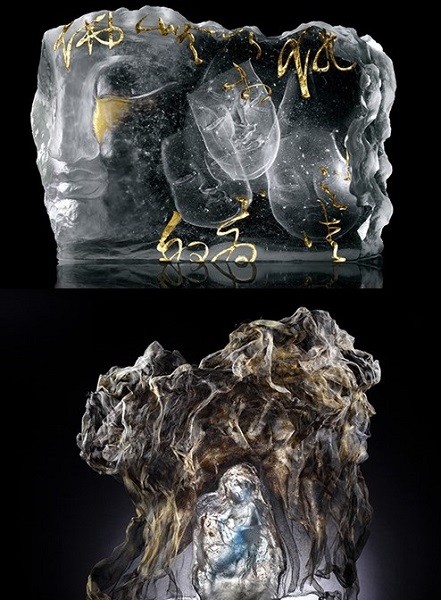“Like Scattered Clouds, the Fragility of Liuli,” and so wrote Chinese poet Bai Juyi during the Tang Dynasty (618-907).
Taiwanese glass artist and retired actress Loretta Yang unveiled the fragile beauty of liuli at the Grand Palais in Paris where her artwork were on exhibit from Sept. 10-13.
The “Enlightenment” and “Formless, but not Without Form” series held the spotlight for four days at the 18th-century French museum, reported Want China Times.
Yang’s first exhibition of the “Formless, but not Without Form” series happened in London’s Victoria and Albert Museum in 1998.
It can be surmised that Yang picked the Buddha as an inspiration for “Formless” when she said that there are “many concepts within Buddhist scripture that cannot be fully expressed through traditional Buddhist art.”
Taipei-born Yang Hui-shan, 63, starred in more than 70 films, debuting in Shut Dik’s 1975 martial arts movie, “Five Pretty Young Ladies,” and was last credited in two 1987 movies.
She received the Best Actress award from the Asia-Pacific Film Festival and from the 21st and 22nd editions of the Taipei Golden Horse Film Festival and Awards in 1984 and 1985.
Yang founded the crystal company LIULI in June 1987 in Taiwan’s Tamshui District, becoming the first one in Asia to offer workshops in liuli-making, according to the company’s official website. It now runs 70 galleries in different countries.
She taught at Glass Art Studio at Tsinghua University in Beijing; at the Notojima Glass Art Museum in Ishikawa Prefecture, described as Japan’s “only public specialized” glass art museum; at the Centre International du Verre et Arts Plastiques (CIRVA) in Marseille, France; and at The Studio at Corning Museum of Glass in New York.
In 2007, the Corning Museum of Glass acquired Yang’s creation called “Proof of Awareness,” a glass peony in full blown.
Yang said that the glass peony “inspires reflection on the Buddhist teachings of impermanence, as the blossom is most vibrant just before the flower begins to fade,” according to the museum’s official website.
Liuli is “a kind of artwork made from colored synthetic quartz crystal that appears as glass or crystal, half transparent, but more valuable than either,” described CRIENGLISH.
Royal families beginning from the Zhou Dynasty (1046 BC-256 BC) had owned liuli.
Xing Lanxiang, a master in liuli-making, told CRIENGLISH, “Liuli can endure sunshine and dust, and it always appears bright and transparent.”
Xing said that the “extremely vivid” color of liuli, which includes purple, blue and green, “never fades.”
An invitation by the Ateliers d'Art de France in Paris reads: “Enlightenment: The Contemporary Glass Art of Loretta H. Yang.”
The exhibition opens on Sept. 17 and will run until Oct. 17.



























